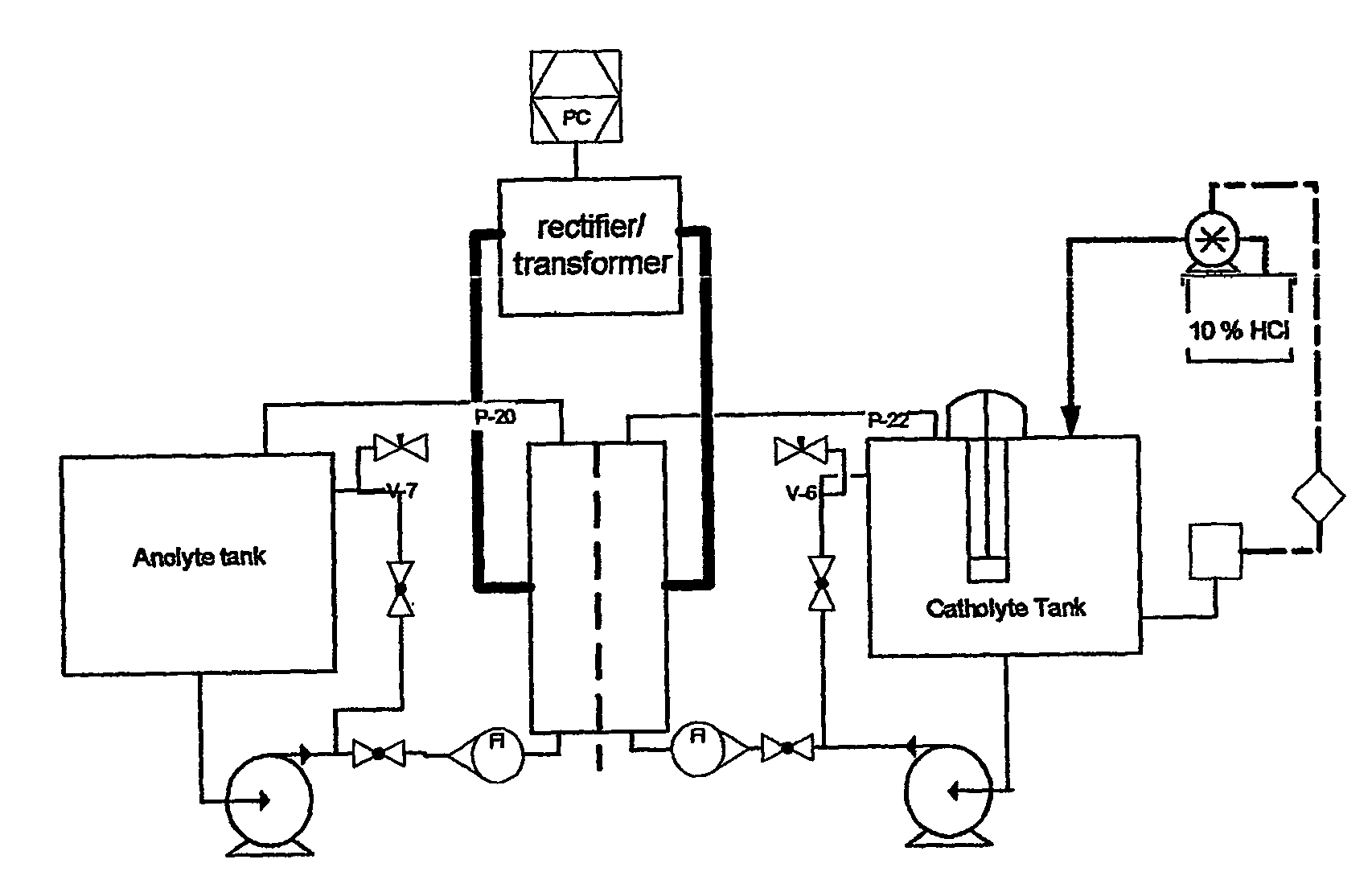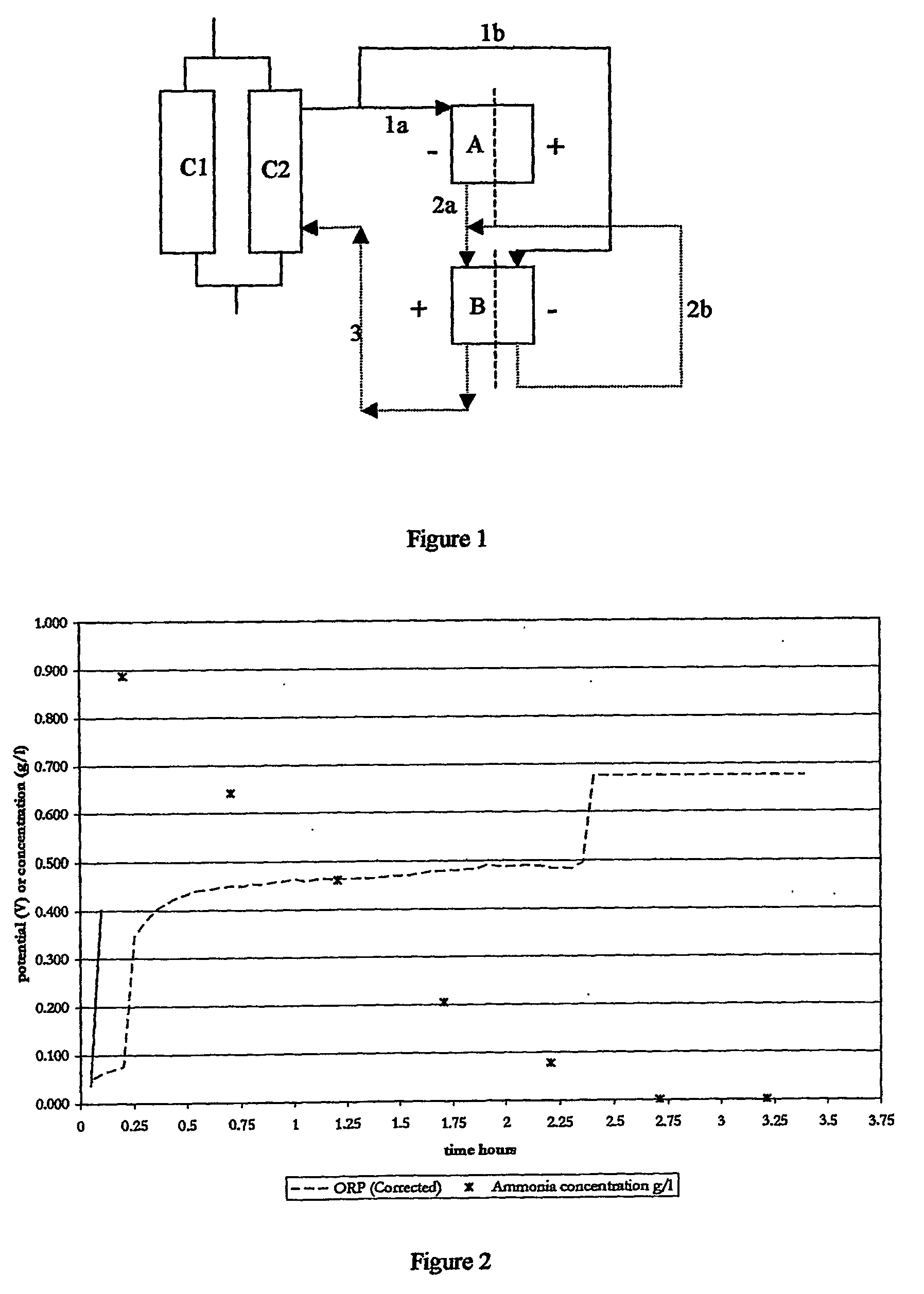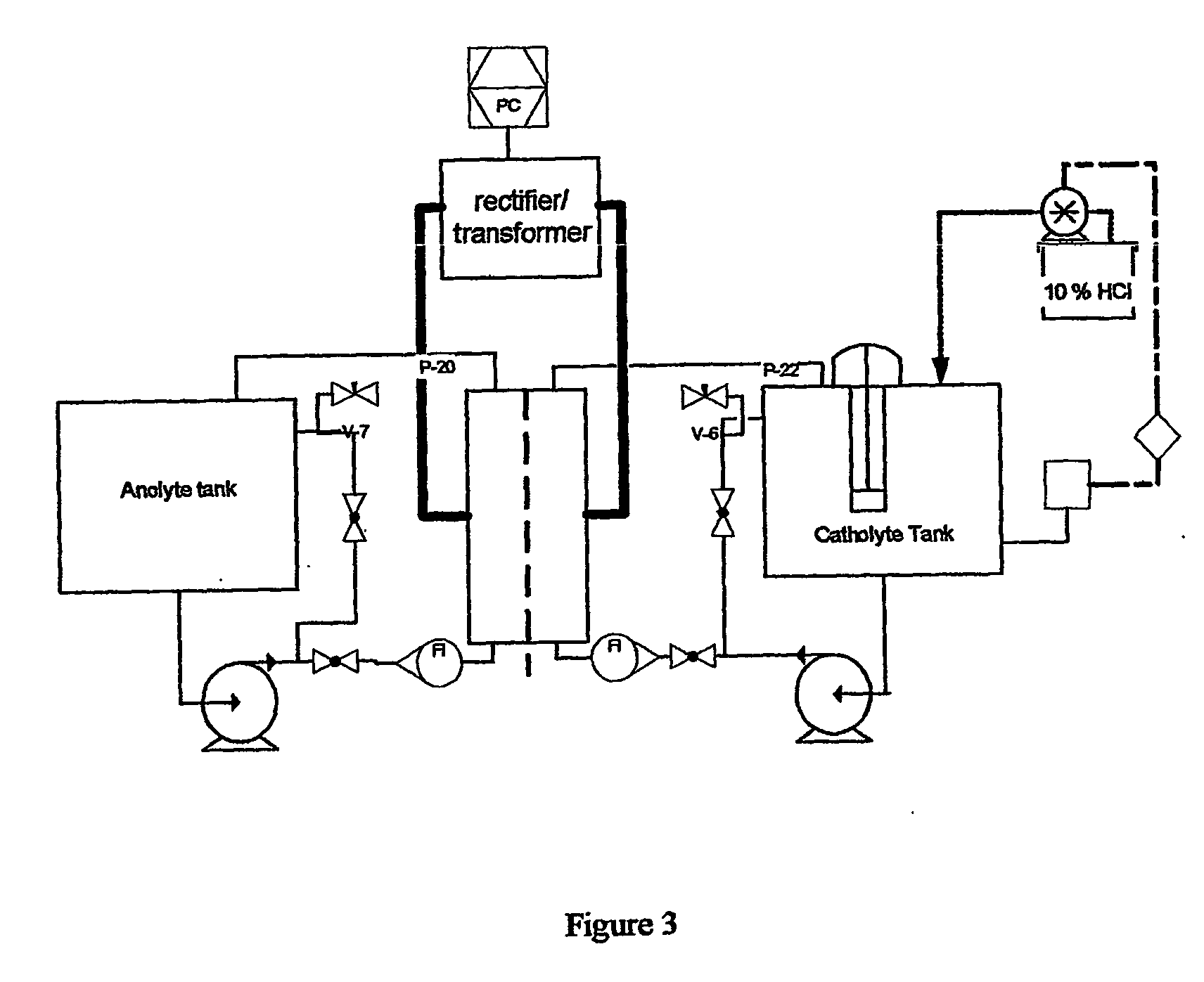Electrochemical Nitrate Destruction
a technology of electrochemical nitrate and nitrate, which is applied in the direction of electrolysis components, water/sewage treatment by ion exchange, water treatment parameter control, etc., can solve the problems of nitrate released from the columns, nitrate levels above a few parts per million in drinking water, and general health risks, etc., to achieve the effect of reducing the risk of nitrate releas
- Summary
- Abstract
- Description
- Claims
- Application Information
AI Technical Summary
Benefits of technology
Problems solved by technology
Method used
Image
Examples
example
[0041]The following examples are provided to illustrate various devices and methods of nitrate removal and destruction according to the inventive subject matter. However, it should be understood that numerous variations may be made without departing from the inventive concept presented herein.
Nitrate Removal
[0042]A chromatography column was loaded with 2000 ml of an anion exchange resin slurry (AMBERLITE™ IRA-400 styrene gel resin) having approximately 0.9 meq / ml binding capacity for nitrate. The nitrate was loaded onto the ion exchange resin from a sodium nitrate solution (about 50 liter at 0.1M NaNO3) that was passed through the column overnight at relatively slow rate. The eluent of the column was periodical checked for unbound nitrate and determined to be below 1 mM. The nitrate was substantially completely eluted from the column using an aqueous solution containing 15 wt % NaCl.
Reduction Of Nitrate
[0043]29 liter of a solution containing 1025 mg / l of NO3− and 15 wt % NaCl was ci...
PUM
| Property | Measurement | Unit |
|---|---|---|
| Fraction | aaaaa | aaaaa |
| Acidity | aaaaa | aaaaa |
| Acidity | aaaaa | aaaaa |
Abstract
Description
Claims
Application Information
 Login to View More
Login to View More - R&D
- Intellectual Property
- Life Sciences
- Materials
- Tech Scout
- Unparalleled Data Quality
- Higher Quality Content
- 60% Fewer Hallucinations
Browse by: Latest US Patents, China's latest patents, Technical Efficacy Thesaurus, Application Domain, Technology Topic, Popular Technical Reports.
© 2025 PatSnap. All rights reserved.Legal|Privacy policy|Modern Slavery Act Transparency Statement|Sitemap|About US| Contact US: help@patsnap.com



